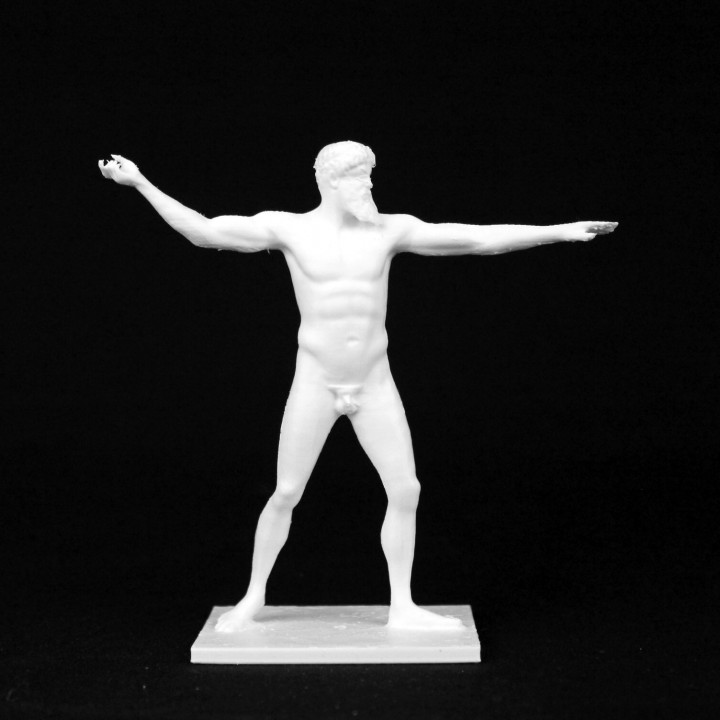
The Artemision Bronze at The National Archaeological Museum in Athens, Greece
myminifactory
Human: Crafted at the dawn of the Classical Period of Greek sculpture (ca. 480–300 BCE), this majestic and harmonious figure embodies supreme beauty, control, and strength.\r\n\r\n\r\nBelieved to represent the most powerful of the Olympian gods, Zeus (or less likely Poseidon), this colossal bronze sculpture was discovered in two pieces at the bottom of the sea off the Cape of Artemision in the 1920s. Zeus is depicted in full heroic nudity with his left arm and foot thrust boldly forward in the direction of his foes, while his right leg and arm are raised and slightly bent, conveying movement. Zeus stands as the militant protector ready for action and would have originally held a thunderbolt (or trident, in the case of Poseidon).\r\nMeant to be viewed from one ideal vantage point—standing facing the vast and muscular torso—this three-dimensional figure demonstrates complete mastery of anatomy. From the intense expression on his face, the bulging veins of his feet, and the variegated transitions between muscles, Zeus appears to have been rendered from a human model. However, upon closer examination, it is clear that aspects have been simplified and proportions expanded to give the figure an exemplary body worthy of his divine status. The sculpture presents its subject as superhuman rather than suprahuman, aligning with the Greek conception of gods as immortal and immensely powerful, yet susceptible to the personality flaws and unpredictable emotions of mortal beings.\r\nThe Greek word for image, agalma, means “delight,” and a sculpture like this would have been created to bring delight not only to Greek citizens but also to the gods. This statue was likely crafted as a votive for a temple dedicated to Zeus. By presenting such works as offerings, the Greeks aimed to appease their gods, earning divine assistance or favor in return.\r\n\r\n\r\nThis object is part of "Scan The World". Scan the World is a non-profit initiative introduced by MyMiniFactory, through which we are creating a digital archive of fully 3D printable sculptures, artworks and landmarks from across the globe for public access. Scan the World is an open source, community effort; if you have interesting items around you and would like to contribute, email stw@myminifactory.com to find out how you can help.
With this file you will be able to print The Artemision Bronze at The National Archaeological Museum in Athens, Greece with your 3D printer. Click on the button and save the file on your computer to work, edit or customize your design. You can also find more 3D designs for printers on The Artemision Bronze at The National Archaeological Museum in Athens, Greece.
